Meadstown
Houses within 10km of this house
Displaying 51 houses.
Houses within 10km of Meadstown
Displaying 51 houses.
| House name | Description | |
|---|---|---|
| Ballynacourty | In 1837 and at the time of Griffith's Valuation occupied by Michael Burke. In the 1850s it was valued at £13 and held from the Honourable C.B. Wandesforde. | |
| Darragh House | The residence of Fred Bevan in the early 1850s, held by him in fee and valued at £12+. In the 1870s Hamilton Geale/Gale lived at Durragh Lodge. The house is now known as Darragh House and is still extant and occupied. Self catering accommodation is available, see www.darraghcottages.com. |

|
| Park House | A house marked on Taylor and Skinner's map and noted by Wilson as Ballingrane and occupied by Hennessy esq. It became the home of Arthur Norcott, fourth son of Hugh Norcott of Springfield who was married to Frances Roberts of Britfieldstown, county Cork. Local sources suggest it was purchased from the Hennessys by Norcott. It was valued at £30 in the mid 19th century and held from the Reverend Francis Stawell. Sold in the 1890s to Ted Cogan whose descendants were still resident in the early 21st century. |
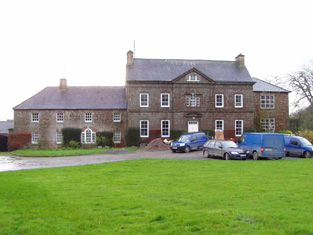
|
| Convamore Upper | J. Delany was the proprietor of Upper Convamore in 1837. George Crofts occupied the house in the early 1850s. He held it from the Reverend G. Atkins Collins and it was valued at £16. The property was later bought by the Reverend Maurice Collis who sold it to the Earl of Listowel. Unoccupied for much of the 20th century it was demolished in 2000. | |
| Annesgrove | The original house was occupied by Colonel Richard Aldworth in the latter part of the 18th century which Wilson, writing in 1786, refers to it as the seat of Mr. Groves. However, he mentions that near it were "the neat house and beautiful shrubbery of Richard Aldworth". It was reconstructed in the early 19th century (probably post 1814) by Lieutenant General the Honourable Arthur Grove Annesley. Anne-grove, Castletownroche was occupied by William Connor in 1814 and by General Annesley in 1837. The General's residence was valued at £60 in the early 1850s. In 1894 the seat of F.G. Annesley. This house continued to be the residence of the Grove Annesleys in the 20th century. In 1942 the Irish Tourist Authority survey noted that the estate had been divided "in recent years". Annesgrove is surrounded by famous gardens which are open to the public during the summer, see www.annesgrovegardens.com. |

|
| Hunting Hill | Hunting Hill, a single storey house, in the townland of Ballyhimock is marked on the first Ordnance Survey map. Home of the Dwyer family in the first half of the 19th century it was occupied by Mr William Dwyer in 1814 and by Thomas Dwyer at the time of Griffith's Valuation. Located on the Annesley estate it was valued at £15. Various tenants lived at Hunting Hill in the latter half of the 19th century until it was leased to Edward Vaughan, whose descendants continue to live here throughout the 20th century. A house is still extant at the site. | |
| Ballykeating | A house probably built in the mid 19th century, occupied by John Grove Annesley who held the property from his father General Annesley. It was valued at £14 at the time of Griffith's Valuation. Sold to the Callaghans in the mid 1890s. The Callaghans continued to own the property until the late 1970s. A property much associated with horse racing and hunting. Buildings are still extant at the site. | |
| Lisnagoorneen | Hajba writes that Thomas Franks, a nephew of Thomas Franks of Ballymagooly, occupied this house at the end of the 18th century. He married Margaret Maunsell of Ballybrood, county Limerick. They and their son were murdered by Whiteboys in 1823. A new house was built by George Foster Delaney in the 1830s and he was succeeded by his nephew George Johnson who occupied the house at the time of Griffith's Valuation. It was valued at £17 and held from the representatives of G.B. Lowe. The Johnson remained in possession until the early 20th century leasing the house to Major Mansergh among others. In 1942 the Irish Tourist Association survey noted that the Major had owned a famous horse called Lord Cunningham and that Lisnagoorneen house was then occupied by his nephew. |

|
| Glenanore/Glananore | Part of this house appears to date from the early 18th century. It belonged to the Verling family, whose interest eventually became vested in the Johnson family. The Reverend Richard Purcell was the tenant in the latter part of the 18th century and Wilson refers to it as his seat in 1786. It was occupied in 1814 by Garret Nagle and by the early 1830s the Hoares were resident. At the time of Griffith's Valuation Mrs Mary Anne Hoare was the occupier, holding the property from Noble Johnson. The buildings were valued at £32. Mrs Hoare was the widow of Reverend Thomas Hoare who was a brother of Sir Joseph Wallis Hoare, 3rd Baronet. In 1942 the Irish Tourist Association Survey asserted that the front part had been constructed in the early nineteenth century but that other parts were much older. It was then the residence of E.J. Hoare and it was still occupied by members of the Hoare family in the 1950s but is now demolished. |

|
| Clogher | Originally a Nagle home and then in the possession of Harmer Bond through whom Clogher passed to the Lowes. Occupied by Mrs Eliza Lowe in the early 1850s, held from Garret Nagle and valued at £28. This house was derelict at the end of the 20th century. Through the Nagles Clogher had a connection with Edmund Burke, Lewis states that the estate "once belonged to the celebrated Edmund Burke". | |
| Ballynamona | The Nagles originally inhabited the castle at Ballynamona but later built a house adjoining the castle. Garret Nagle was resident in 1814 and Lewis refers to Ballynamona as the ancient family residence "about to be rebuilt". Garret Nagle occupied a house at Ballynamona valued at £9.15 shillings at the time of Griffith's Valuation which he held from John Furlong. The house is still occupied. | |
| Johnsgrove | Originally a Glover family home, by the time of Griffith's Valuation it was occupied by Francis F.P. Holmes and held from Walter Nugent. The buildings were valued at £30. This house is still occupied. |

|
| Ballyenahan | A house on the Hyde estate inhabited by the Welsh, Kearney, Spratt, Greene and Barry families in the late 18th and 19th centuries. Wilson, writing in 1786, refers to it as the seat of Mr. Walsh. Eliza Greene was the occupant at the time of Griffith's Valuation when the buildings were valued at £18. The Barrys owned this house until the late 20th century. |
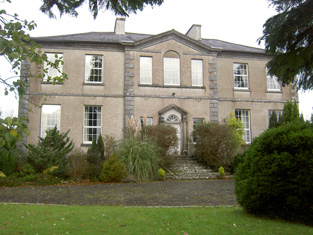
|
| Laurentinum | A mid 18th century house, seat of a junior branch of the Creagh family until the mid 19th century. Wilson refers to Laurentinum as the seat of Mr. Creagh in 1786. At the time of Griffith's Valuation occupied by Stephen Fagan who held it from the representatives of Michael Creagh. The buildings were valued at £32. Later sold to the MacCarthy Morroghs. Home of the Magner family in the 20th century. |
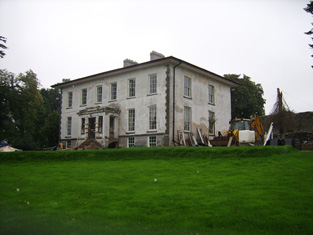
|
| Kilbrack | Hajba writes that this house was built by William Stawell who married Catherine Creagh of Creagh Castle. William was succeeded by his nephew the Reverend Francis Stawell in 1830. Kilbrack remained in Stawell possession until the end of the 19th century. It is still a family home. |

|
| Kilbrack Cottage | Occupied by Michael Creagh in 1814 and by Reverend E.P. Sheehan in 1837. Father Sheehan's representatives were the occupiers at the time of Griffith's Valuation. They held the property valued at £25 from the representatives of Michael Creagh. Kilbrack Cottage is still extant. The National Inventory of Architectural Heritage indicates that it was built c.1760. |

|
| Landscape | This house was held by the Foot family from the Hills by a lease dated 1789 for 3 lives renewable for ever. Occupied by James Hammond in 1837 and in the early 1850s Thomas Bailey was resident holding the property valued at £10.15 shillings from Miss Hill. In the sale rental of 1858 the tenants are given as Margaret and Lucinda Foot. |
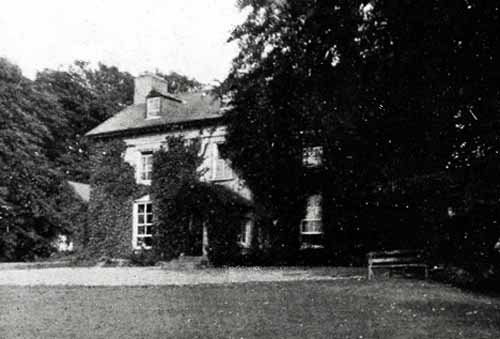
|
| Carker | An early 18th century house built by the Evans family and their main residence for two centuries. It was valued at £40 in the mid 19th century and occupied by John W. Evans in 1906. The roof was removed in the 1950s but the house has been recently restored. For sale in recent years, see www.michaelhdaniels.com. |

|
| Lissa | Originally a Nash home, which passed to Admiral Henry Evans, a younger brother of Nicholas Green Evans, following his marriage to Elizabeth Nash in 1801. Hajba writes that it was occupied by Hugh Norcott in the early 19th century. Captain Croker was resident in 1837 and Charles Croker in the early 1850s. He held the property from the Admiral's son, Nicholas Evans, and it was valued at £32. The home of the Kerr family in the 20th century. For details of the Croker occupation see see http://members.iinet.net.au/~nickred/croker_research/The_Irish_CROKER.pdf page 65. |

|
| Newtown Park | Built by John Evans, younger brother of Ralph Westropp Evans, in 1847. He is recorded as the occupant at the time of Griffith's Valuation, holding the property from his first cousin, Nicholas Evans. The buildings were valued at £15. The house was later extended by Nicholas Evans. Still extant and occupied. |
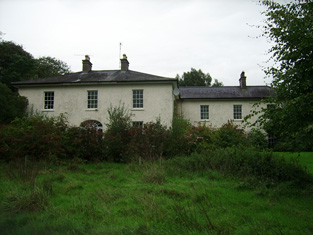
|
| Creagh Castle | Creagh Castle was acquired by Dr John Creagh in the late 18th century and passed to his daughter Mary and her husband, Kilner Brooke Brasier. Their second son, John Brasier-Creagh, inherited Creagh Castle and is credited with building the present house, the original one having been destroyed by a fire. George Washing Brasier Creagh held Castle Creagh in fee at the time of Griffith's Valuation. The buildings were valued at £50. The descendants of John's brother, George Washington Brasier Creagh, continued to live at Creagh Castle until the 1930s. In 1906 the building was valued at £44+ and occupied by Captain John Brazier Creagh. In the 1940s the Irish Tourist Association Survey noted that there was a castle formerly associated with the Coppinger family on this property. |

|
| Crobeg | Home of a branch of the Stawell family throughout the 19th century. The family were involved in the flour milling business at Doneraile. At the time of Griffith's Valuation George Stawell held Crobeg from the representatives of Luke Hassard. The buildings were valued at £36. The house was demolished in the 1980s. |

|
| Cromore | John Creagh leased part of Castlesaffron to Luke Hassard in the late 18th century, who Hajba writes built the house Cromore. Soon afterwards it became the home of the Campion family and Roland Campion was resident at the time of Griffith's Valuation, holding the property from the representives of Luke Hassard. The buildings were valued at £15. Later the home of the Graham family. The building was extensively rebuilt and restored in the 1980s. | |
| Cottage | James Norcott is recorded as the proprietor of Cottage, Doneraile, in 1814 and J. Norcott MD was resident in 1837. Philip Allen occupied the house in the early 1850s. He held it from Arthur Norcott and the buildings were valued at £20. This house no longers exists. | |
| Donnybrook | Donnybrook was occupied by Charles Smyth in 1814 and by W. Hill in 1837. It belonged to the representatives of Arundel Hill in the early 1850s when the buildings were valueda at £28 and the property was held from William Hill. Bought by the O'Connors at the end of the 19th century. |

|
| Ballyshara | Occupied by Henry Evans in 1814 and by Ralph Evans at the time of Griffith's Valuation. He held the property from Reverend Francis Stawell. The buildings were valued at £18. The home of the Duane family in the 20th century, now a ruin. | |
| Graig | Built by the Hill family, probaby in the last decade of the 18th century, this house was their main home throughout the 19th century. Occupied by James Hill in 1814 and 1837 and by Arundel Hill in the early 1850s. The buildings were valued at £25. By the mid 1870s the head of the Hill family was resident at Mount Southwell. Graig was restored in the 20th century. |
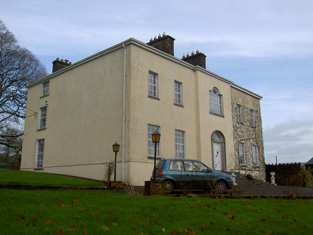
|
| Bowen's Court | Built in the 1770s by Henry Cole Bowen this house was the seat of the Bowen family until 1959 when it was sold by the author Elizabeth Bowen. Wilson, writing in 1786, refers to it as Faraghy, the seat of Mr. Cole Bowen. It was held in fee by Mrs. Eliza Bowen at the time of Griffith's Valuation, when it was valued at £75. In 1942 the Irish Tourist Association Survey noted that the house had been attacked during the 1798 rebellion. Bowen's Court was demolished in 1961. |
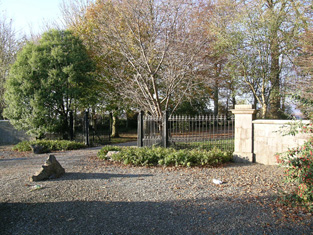
|
| Ballyclogh [Ballyclough] | This property was inherited by the Barrys through marriage with a member of the Purdon family. Parts of this house may have dated from the 17th century. Lewis writes of "a handsome mansion in the Elizabethan style". Additions were made in the 19th century. At the time of Griffith's Valuation it was valued at £34 and held by James Barry in fee. The house was burnt in the 1920s. The north wing survived, built 1904. In 1944 the Irish Tourist Association survey noted that Ballyclough was the birthplace of Sir Redmond Barry, "prominent in public life in the state of Victoria, Australia". It was restored and is still a residence. |
![Photo of Ballyclogh [Ballyclough]](https://landedestates.ie/storage/img/orig/1568.jpg)
|
| Airhill | The home of the Green family for over two centuries, occupied by Colonel H. G. Barry in 1814 and by James Greene at the time of Griffith's Valuation. James Greene held the property from Francis Wyse. The buildings were valued at £20. This house is still a family home. | |
| Sandville | This house valued at £13 was occupied by Mary Sullivan and held from - Roberts at the time of Griffith's Valuation. Hajba writes that it was occupied by Mrs Ellen Punch in 1910. It was bought by the racing trio of Sangster, Pigott and O'Brien in the late 1960s. The house was demolished and the property became a stud farm. | |
| Woodville | Woodville was occupied by the Reverend William Berkley in 1814 and in 1837 by Mrs Gibbons. Anne Gibbings was resident in the 1850s [widow of Bartholomew Gibbings of Gibbings Grove]. She held the property from Martha Jaunsey and the buildings were valued at £17.15 shillings. Her fourth son Robert Gibbings is described as "of Woodville" in Burke's Landed Gentry. A note on the sale rental of 1862 records the purchase of Lot 1 Woodville by Mr Starkey [Dr William Starkey]. The house remained in the possession of the Starkey family until the early 20th century. |
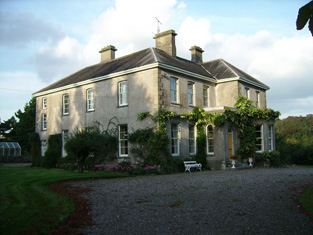
|
| Kilcummer | This would appear to have been a Wilson residence from the late 18th century though Wilson, writing in 1786, refers to it as the seat of "Mr. Groves". . Hajba writes of earlier associations with the Oliver, Cole Bowen and Grove families. Henry Cole Bowen was resident in 1750. At the time of Griffith's Valuation William Wilson was the occupier. He held the property from Benjamin Grubbs and it was valued at £10. In the 1870s William Wilson of Kilcummer owned 182 acres in county Cork. This house is no longer extant. | |
| Renny | This house, overlooking the River Blackwater, may have been part of the Widenham estate which passed to the Smyths. The site had earlier associations with the poet Edmund Spenser. Wilson, writing in 1786, refers to "Rinny, the seat of Mr. Nagle, which was formerly part of the estate of the immortal Spenser". In 1814 the Reverend C.P. Wallis was the occupant. At the time of Griffith's Valuation the house was occupied by Henry Smith who held the property in fee, the buildings were valued at £23. Henry Smyth advertised the house and 541 acres for sale in May 1851, all it required at that time was a "small outlay in paint and paper to make it at once fit for occupation". In 1885 Walford noted Renny as the seat of John Blackburne. Hajba writes that the last occupant was Captain [Pepper] Roberts. The Earl of Listowel demolished the house following the Captain's death in 1900 though many of the buildings shown on the 1st edition Ordnance Survey map had already disappeared by then. | |
| Castle Widenham [Blackwater Castle] | Originally a Roche stronghold, the castle was granted to the Widenhams in the mid 17th century. The castle was altered in both the 18th and 19th centuries. In the early 19th century it passed by marriage to the Brazier Creagh family and again by marriage to the Smyths. At the time of Griffith's Valuation the buildings were valued at £70 and held by Henry M. Smyth from Henry Leader. In 1894 it was the seat of Mrs. Smyth. In 1942 the Irish Tourist Association survey noted that it was still part of the Smyth family estate. Also known as Blackwater Castle, it is still extant. In 2022 it was offered for sale. |
![Photo of Castle Widenham [Blackwater Castle]](https://landedestates.ie/storage/img/orig/1571.jpg)
|
| Springvale | This house was ccupied by Roger Bourke in 1814 and by Roger S. Bourke in 1837. Roger Burke was married to a sister of Garret Nagle of Ballinamona. William Baily was resident in the early 1850s and held the property from the Earl of Kingston. The buildings were valued at £14.10 shillings. Grove White writes that Springvale was purchased by George Grehan of Clonmeen in 1855 and John J. Therry, his agent, lived there. In 1942 the Irish Tourist Association noted it as the residence of Mrs. Helen Clancy, a descendent of Therry. Although abandoned for some years in the 20th century the house has now been restored and is lived in again. |

|
| Rockmills Lodge [Rockmills House] | The lodge was the residence of Colonel Richard Aldworth in 1814. Hajba writes that it was built as a shooting and fishing lodge by Colonel Richard Aldworth in 1776 and that he left the property including the mills to his wife's nephew, Charles Deane Oliver (grandson of Robert Oliver of Cloghanodfoy). Occupied by Mrs Sarah Oliver in 1837 and at the time of Griffith's Valuation and held by her from the representatives of Bond Lowe. The buildings were valued at £25 and she was leasing a flour mill and other buildings valued at £170 to P.L. Lyster. This property was advertised for sale in June 1856. The house was burnt in May 1921 during the War of Independence when it was the residence of Charles Deane Oliver. In 1942 the Irish Tourist Association Survey noted that it had been rebuilt by the Walsh family and was then (1942) occupied by the Casey family. It is still extant. The mills are now in ruins. |
![Photo of Rockmills Lodge [Rockmills House]](https://landedestates.ie/storage/img/orig/1591.jpg)
|
| Oldtown House (Fermoy) | William Creagh of Oldtown married Sarah Nagle of Annakissy in the 1770s. The Creaghs were succeeded at Oldtown by the Evans family. Rear Admiral Henry Evans was the occupier in 1837. Oldtown was the residence of Nicholas Evans in the early 1850s. Valued at £29 it was held from Pierce Nagle. Later occupied by the Campion and Roberts families. Oldtown is still extant. |
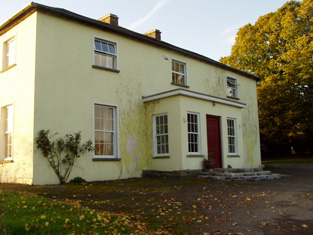
|
| Ballywalter | The seat of the Welstead family valued at £45 in the early 1850s and held in fee. The original house was replaced by an early 19th century building. It was still valued at £45 in 1906 and occupied by S.Q.W. Penrose. It was burnt in May 1921 during the War of Independence and later rebuilt. It is still a family residence. |

|
| Shanballymore | The seat of a branch of the Roberts family, Hodder Roberts was resident in 1814 and Watkins Roberts in 1837. The residence of John Roberts in the early 1850s, held from William W.M. Hodder and valued at £23. The property remained in Roberts possession until 1884 when it was sold to the O'Keeffe family who still reside there. |

|
| Dannanstown | A house built beside a large mill by John Furlong circa mid 19th century. At the time of Griffith's Valuation occupied by John Furlong who held it and the large flour mill and offices from Richard Welstead. The buildings were valued at £135. Later owned by Humphrey Smith and Robert Hobson. |
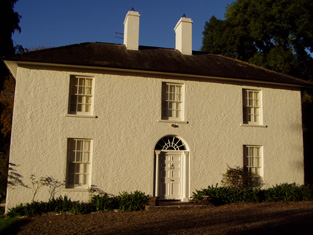
|
| Marshalstown | This house was known as Castle Eugene in 1837 when it was the home of Eugene O'Neill, medical doctor. Dr O'Neill was still resident in the early 1850s when the house was valued at £41.10 shillings and held from the Earl of Kingston. This house no longer exists. | |
| Mounteagle Cottage | Hajba writes that this was a sporting lodge of the Earls of Kingston. In the early 1850s it was occupied by Thomas O'Brien and valued at £14.10 shillings. It is still a residence. | |
| Killee | The seat of the Montgomery family from the mid 18th century, occupied by George Montgomery in 1814 and by William Quinn Montgomery in the early 1850s. It was held in fee at this time and valued at £43. Killee remained in Montgomery possession until the 1930s. It is still occupied. |

|
| Broomhill | Valued at £11, occupied by James Geran and held from James N. Cronin at the time of Griffith's Valuation. Later the home of a member of the Montgomery family and still inhabited. | |
| Cloonkilla | James H. Mandeville held buildings valued at £21 from James N. Cronin among the woods at Cloonkilla at the time of Griffith's Valuation. | |
| Stannard's Grove | Located on the Cotter estate, this house was occupied by the Stannard family at the end of the 18th century. It was later occupied by the Adams and Smith families. Lewis records it as unoccupied and at the time of Griffith's Valuation it was held in fee by Edward Cotter. The home of William Stackpool at the beginning of the 20th century. Hajba writes that the house was reconstructed in 1924 after been blown up in 1921 by the British Crown Forces. In 1942 the Irish Tourist Association Survey noted that it had, since 1934, been owned by the Herlihy family. It is still extant. |

|
| Rocksavage | This house was not built at the time of the first edition Ordnance Survey circa 1840. Built for John Craven Mansergh [in the 1850s] on land that formerly belonged to the Martin family. In 1942 the Irish Tourist Association Survey reported that Rocksavage was the residence of Dr. Foley. This house, situated close to the Awbeg River just south of Castletownroche, is still extant. | |
| Wallstown Castle | The castle was originally in the hands of the Wall family. In the late 17th century it passed into the possession of the Ruddocks and then through marriage to the Creaghs and Stawells. In 1836 it was leased to Thomas Baily and was held by Charles Bailey from Thomas Bailey at the time of Griffith's Valuation, valued at £7.18 shillings. The property was purchased by John McCormick of Dublin in 1858. The battlements were added to the building circa 1860. See www.corkpastandpresent.ie. In the 1940s the Irish Tourist Association reported that it had been purchased in the 1920s by a Mr Crowley who "lives in a grand mansion near the ruin of the old castle", |
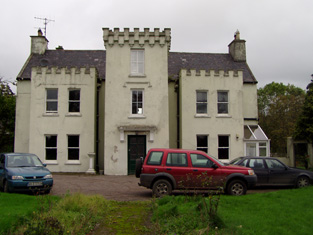
|
| Aghacross | Wilson, writing in 1786, refers to Aghacross as the seat of Mr. Anderson. No substantial residence is shown in this area on the 1st edition Ordnance Survey map. The townland was in the possession of William Anderson at the time of Griffith's Valuation. A modern farm exists at the site now. | |
| Rockvale (Castletownroche) | At the time of Griffith's Valuation, Leslie O'Callaghan was leasing this property from Eustace estate when it had a valuation of £8. In 1942 the Irish Tourist Association survey noted that the ruins of what had been a Nagle property were still visible to the rear of Rockvale. The Survey also recorded that Leslie O'Callaghan, who "had lived there about 100 years ago" had been killed in Cork and that the property had come into the ownership of the Annesley estate. It was later sold to the Patterson family and the house is still extant. |
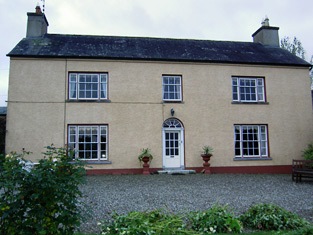
|

